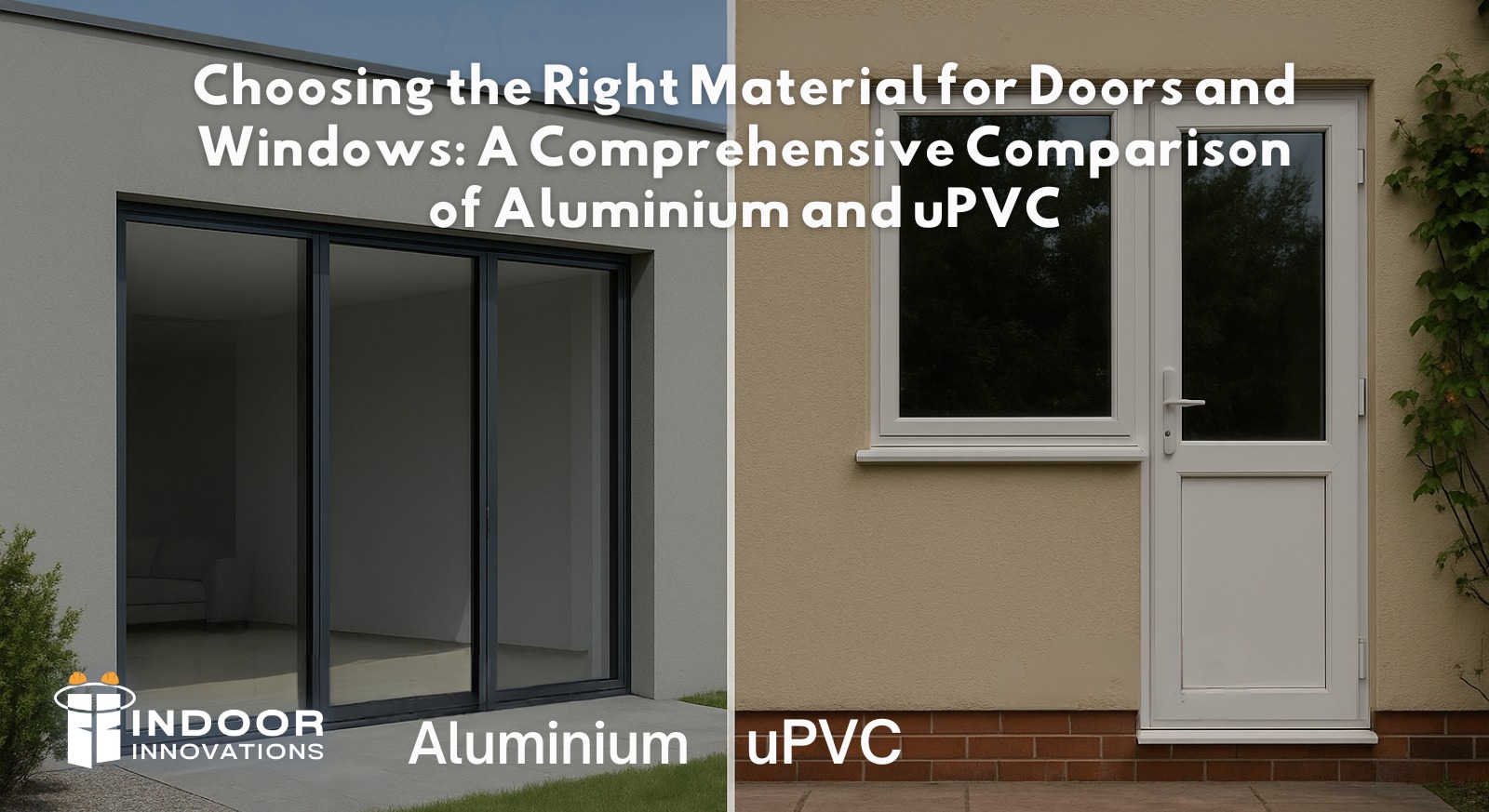
Choosing the right material for your doors and windows is one of the most critical decisions for any homeowner or builder. It's a choice that impacts everything from your home's energy efficiency to its long-term aesthetic appeal. The debate often boils down to two giants in the market: aluminium vs. uPVC. Both are excellent modern choices, especially compared to traditional wood, but they offer distinct advantages tailored to different needs and architectural visions.
Aluminium has rapidly become the preferred choice for contemporary design, driven by its exceptional strength and versatility.
Aesthetics and Design Freedom: Aluminium is the champion of the "minimalist revolution." Its inherent strength allows for far slimmer sightlines and narrower frames than uPVC. This means larger, uninterrupted glass panels, maximising your view and the inflow of natural light. For projects requiring large sliding doors or expansive window walls—common in modern Indian homes—aluminium is unmatched. It offers a premium, sleek, and high-end finish that complements modern architecture. Furthermore, it can be finished in a vast array of colours and effects, including wood-grain textures, through powder coating.
Durability and Longevity: As a metal, aluminium offers superior structural integrity. It does not rot, rust, or warp, even under India's demanding, varied climate conditions, from high humidity to intense heat. An aluminium door or window system is an investment built to last for decades with minimal degradation. This resilience makes it ideal for high-rise buildings and demanding commercial applications where structural stability is paramount.
Maintenance: Aluminium is virtually maintenance-free. The high-quality powder-coated finish requires only occasional cleaning with soap and water to keep it looking brand new, eliminating the need for painting or sealing.
Unplasticized Polyvinyl Chloride (uPVC) is a popular, cost-effective alternative known primarily for its excellent insulating properties.
Energy Efficiency: uPVC is a fantastic insulator because plastic is a poor conductor of heat. Its multi-chambered frame design effectively traps air, creating a thermal barrier that significantly reduces heat transfer. For homeowners prioritising the lowest possible energy bills in cold or temperate climates, uPVC offers excellent thermal performance and is known for its ability to reduce outside noise.
Cost: Generally, uPVC frames have a lower initial cost compared to high-end, thermally broken aluminium systems. This makes them a budget-friendly option for projects where cost savings are a priority.
Durability Considerations: While durable, the uPVC material is thicker than aluminium. It requires bulkier frames to maintain structural integrity, which results in thicker sightlines and smaller glass areas compared to a slimline aluminium system. Over very long periods, uPVC can sometimes be prone to slight expansion or discolouration (yellowing) when exposed to extreme UV rays, though modern formulations have significantly improved this.
When deciding between aluminium windows vs uPVC, consider these three factors:
At Indoor Innovations, we specialise in premium, high-performance aluminium solutions. We believe that while uPVC is functional, aluminium delivers the ultimate blend of durability, energy efficiency (especially when incorporating thermal break technology), and architectural elegance required by the best homes today. Whether you are looking for aluminium or uPVC doors and windows, choosing a high-quality product from a trusted expert ensures lasting value for your home.